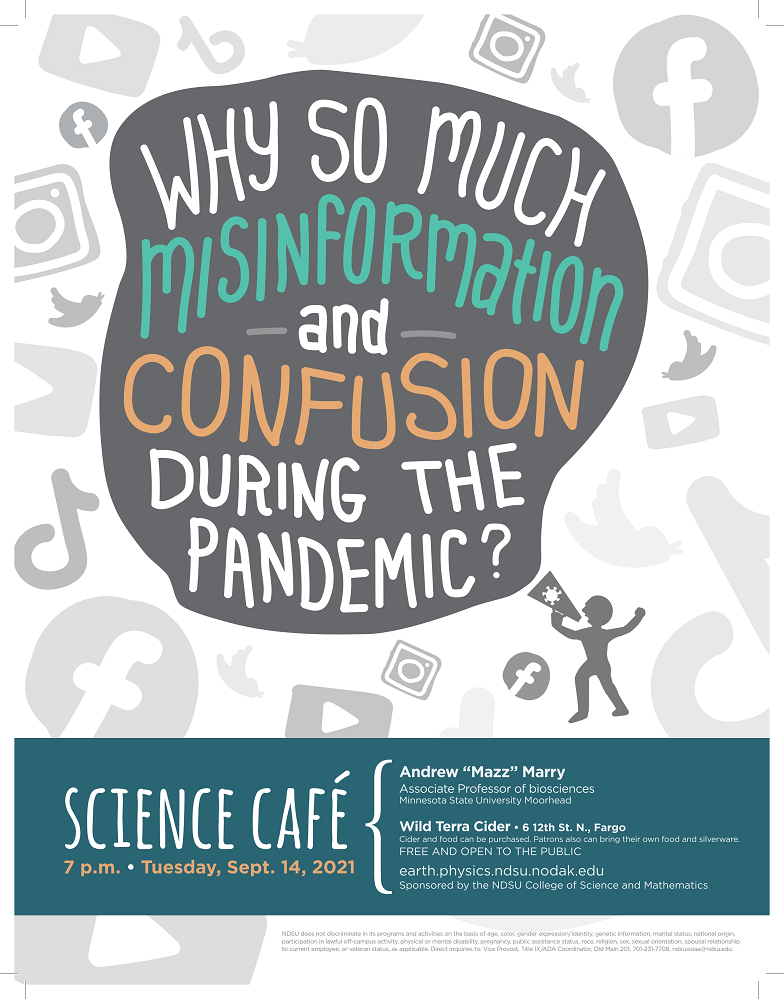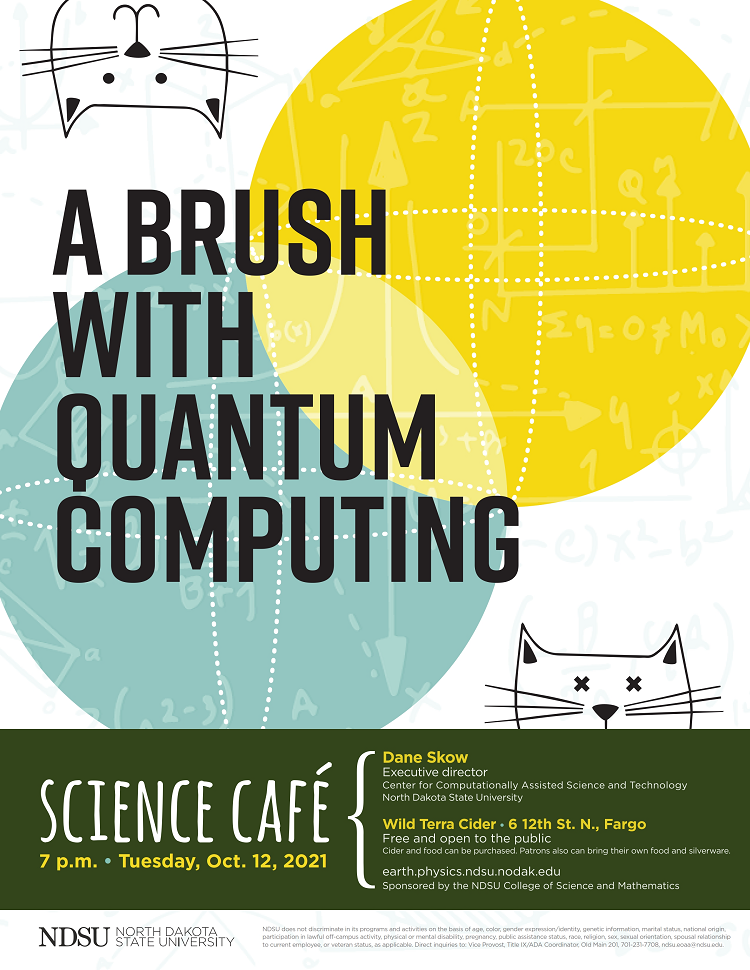
Covid-19: Not the first pandemic, so why so much misinformation and confusion?
Andrew "Mazz" Marry
Associate Professor of Biosciences, Minnesota State University Moorhead
Abstract: The shift from hunter-gatherer to agrarian societies and increased trade across communities 10,000 years ago has favored the spread of communicable diseases in human and animal populations and facilitated the transmission of pathogens. Additionally, expanded cities, extended trade territories, increased travels as well as effects on ecosystems due to increased human population raised the emergence and spread of infectious diseases leading to higher risks for outbreaks, epidemics and even pandemics. Viruses are found wherever there is life and have probably existed since living cells first evolved. Every time a single virus enters a host cell and replicates, it has the potential to mutate - and thus can develop increased dissemination potential and lethality. Despite the persistence of disease and pandemics throughout history, there is one consistent trend over time - a gradual reduction in the death rate. Healthcare improvements and understanding the factors that incubate pandemics have been powerful tools in mitigating their impact. Covid-19 and known variants continue to spread around the world, with more than 198 million confirmed cases and more than 4.2 million deaths across all 195 countries. With our history of dealing with disease, why is this current pandemic so different? Why are people refusing to be vaccinated? What is heard immunization? What is an R number? Why such a refusal to wear a mask? These and other questions will be discussed during this presentation, and I look forward to a spirited conversation.

A Brush with Quantum Computing
Dane Skow
Executive Director, Center for Computationally Assisted Science and Technology (CCAST), North Dakota State University
Abstract: What IS quantum computing and why is it different? Afterall, transistors only work because of quantum mechanics in the first place; so what's the big deal? We will explore this new landscape, painting with the big brush, so no calculus required... The word of the day is "entanglement" and the strange reality of the quantum world immortalized with Schroedinger's Cat. The binary math of normal computers gives way to linear algebra of complex numbers for quantum computing. Come join us as we discuss this and other unique features of quantum computing at the October 12th Science Cafe.

Big HealthCare Data: WHEN, HOW and WHAT
Bong-Jin Choi
Assistant Professor, Department of Statistics and Department of Public Health, North Dakota State University
Abstract: The term "Big Data" came to us since 1970. We can see "Big data" in most places, such as data storage, health care data, security, customer behavior. Also, google, bing, yahoo, amazon, etc. When we use computers such as for searching the internet, emailing, shopping, chatting, and video calling, all our information can be collected by a software program. The automated bot can collect all the information and save the information into their data storage, and it became the BIG DATA. All the data are linked to each other. However, health care data is different. Each facility can't share their patient information with each other because they have their own rules to save data, and privacy is considered. I will talk about WHEN the big health care data came, HOW they built, and WHAT we can do using the big health care data.